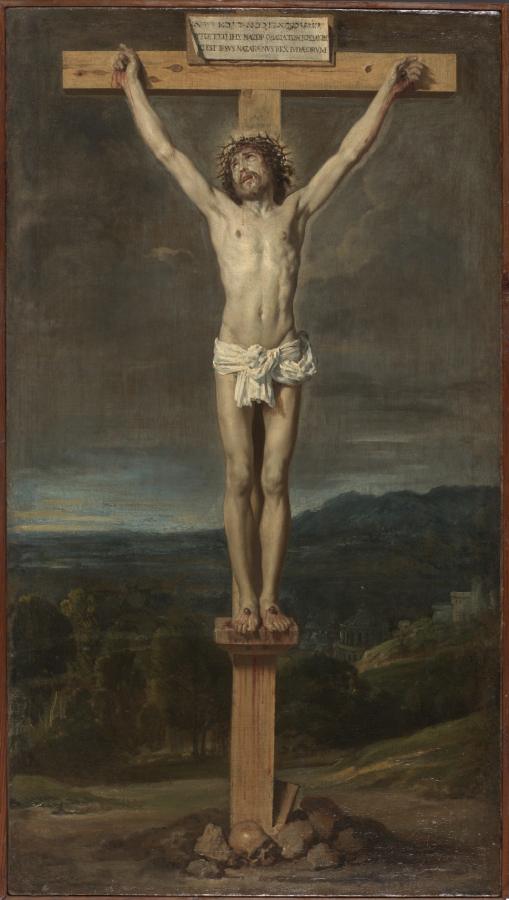Velázquez, Diego (1599-1660)
Cristo en la cruz (Christ on the Cross)
1631
Oil on canvas, 100 x 57 cm
Museo del Prado, Madrid
Unlike the Christ Crucified (P1161) from the convent of San Plácido, whose authorship and extraordinary merits are uncontested, the present work has produced division of opinions among historians. Some do not consider it a work by Velázquez’s hand, while others point out that it bears his signature. Still, it seems rather strange that a painter who preferred not to put his name on his paintings would have done so on a relatively unpretentious work. Its clear anatomical similarities to the San Plácido work have also been pointed out, along with the presence of four nails -an iconographic singularity closely linked at that time to artists from Franciso Pacheco’s circle, including his son-in-law and Alonso Cano. Some historians have related its colors to those of Joseph’s Tunic (Patrimonio Nacional) and Vulcan’s Forge (P1171), both of which are from around the date that appears alongside the signature on the present work. Yet others believe that, while it can be related to Velázquez’s surroundings, it is vastly inferior to his capacity and even has a rather clumsily constructed background, indicating that it may have been painted in his workshop. Technical studies made in recent years also support some skepticism about Velázquez’s complete authorship (Text from Portús, J.: Velázquez. Guía, Museo del Prado, 1999, p. 91).
